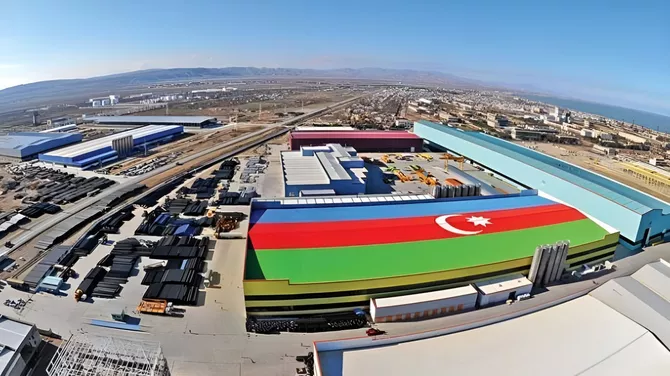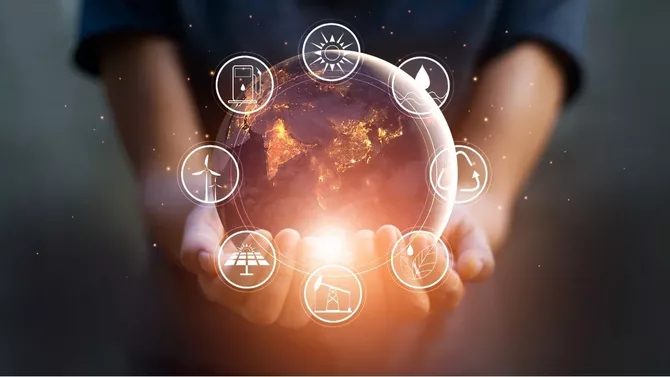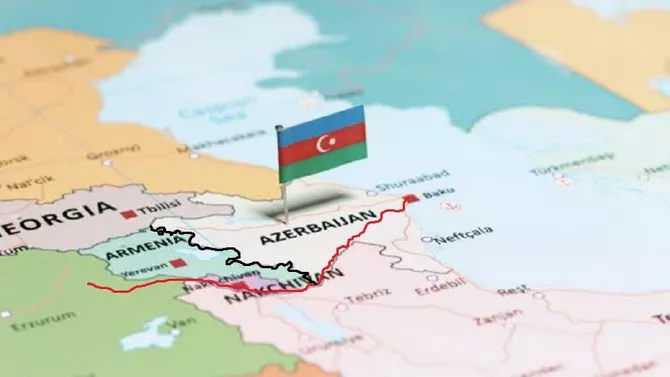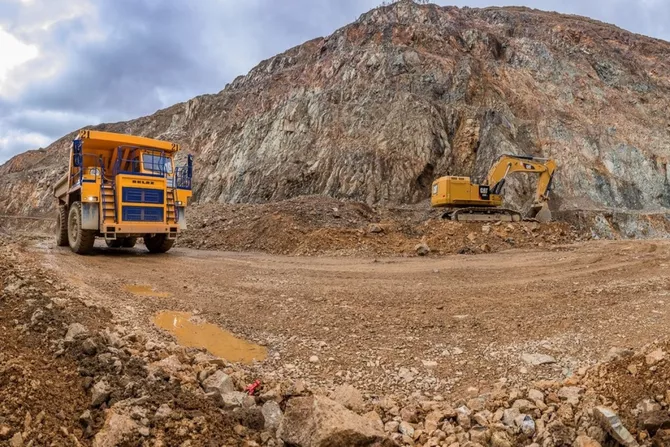
photo: Report
Beijing’s quiet yet determined economic expansion continues to shape the industrial future of Eurasia, and it has now reached Dashkasan, a mountainous region in western Azerbaijan known for its vast iron ore deposits. The recent meeting between senior officials from Sinosure and Sinosteel with Azerbaijan’s AzerGold CJSC, Dashkasan Iron Ore LLC (DDF), and Azerbaijan Metal Company may not have made global headlines, but its implications could be profound. Behind this cooperation lies a vision that connects Baku’s strategic modernisation goals with Beijing’s long-term Belt and Road Initiative.
According to Azerbaijani media reports, discussions focused on preparing a feasibility study for a large-scale hot-briquetted iron (HBI) plant in the Shamkir District. The project, which aims to produce two million tons of HBI per year by 2029, has the potential to become one of the most advanced metallurgical facilities in the region.
For Azerbaijan, this represents a significant step toward diversifying an economy still heavily reliant on oil and gas. For China, it is another opportunity to strengthen its industrial footprint along one of the most strategically important corridors of Eurasia - the South Caucasus.
photo: Reuters
Sinosure, China’s state export credit insurance corporation, plays a crucial role in financing global infrastructure projects under the Belt and Road Initiative (BRI). Its support provides financial security and risk management for Chinese investors, making it easier for them to enter complex or high-risk markets.
Meanwhile, Sinosteel, one of China’s largest state-owned engineering and mining firms - now part of the Baowu conglomerate - offers technological expertise and industrial experience in iron ore processing and steelmaking. Its presence in Azerbaijan signifies not just business cooperation, but the extension of China’s industrial diplomacy.
Beijing’s approach in this case is pragmatic. It does not come with political conditions or ideological demands, which makes it attractive for countries like Azerbaijan that prioritise sovereignty in decision-making. Instead, China offers technical know-how, long-term financing, and access to industrial ecosystems that can rapidly upgrade production capacity.
photo: APA
Azerbaijan’s leadership has long recognised the need to move beyond the extractive model of its energy sector. Since 2020, President Ilham Aliyev has expanded AzerGold’s mandate from gold mining to include the management and development of ferrous metal deposits. The creation of Dashkasan Iron Ore LLC (DDF) as a subsidiary marked a turning point in the country’s industrial policy.
In 2020, a presidential decree allocated three million manats for geological studies and a feasibility assessment of the Dashkasan deposit. The results were promising: geological exploration confirmed total iron ore reserves of 187 million tonnes, sufficient for up to 15 years of production. British consulting firm Micon International later developed a 21-year mining plan, integrating modern extraction and processing technologies to maximise efficiency and sustainability.
The project took a major step forward in 2025, during the 1st Azerbaijan International Investment Forum (AIIF 2025) in Baku. There, DDF signed a strategic partnership agreement with Kazakhstan’s Fonte GreenMet Investments Fund OEIC, leading to the establishment of Azerbaijan Metal Company LLC, a joint venture that will handle financing, construction, and management of the new HBI plant.
This move underlines Azerbaijan’s growing ambition to become a regional hub for metallurgical production. Once operational, the plant will rely on direct reduction technology, a cleaner, more energy-efficient process that reduces iron ore into pure iron using natural gas instead of coal. This not only aligns with global trends towards decarbonisation but also supports Azerbaijan’s environmental commitments under the Paris Agreement.
photo: APA
The Dashkasan project is expected to attract $1.2 billion in investment and create more than 4,000 jobs during both construction and operation. Over the course of its lifecycle, it could generate around $13 billion in revenues for the Azerbaijani budget. Beyond the numbers, the project promises to create a ripple effect across the economy, spanning logistics, infrastructure, education, and technology transfer.
Zakir Ibrahimov, Chairman of AzerGold, emphasised that the relatively low iron content of the ore (around 40%) and the lack of direct maritime access make it crucial to produce higher-value products rather than exporting raw ore. “Considering all these factors, we determined an optimal technological approach in cooperation with internationally recognised consulting firms,” he said. “This involves a three-stage production chain - manufacturing high-grade concentrate with 67% iron content, followed by pellet and hot-briquetted iron production.”
In essence, Azerbaijan aims not merely to extract iron, but to build an integrated metallurgical ecosystem. The combination of local resource development, Chinese industrial expertise, and Kazakh financial participation demonstrates how transnational cooperation can transform natural endowments into sustainable economic power.
photo: Trend
From a geopolitical standpoint, the Dashkasan project highlights China’s growing engagement in the South Caucasus, a region traditionally influenced by Russia, the West, and Türkiye. By investing in long-term industrial projects, China positions itself as a neutral economic partner, providing development without political interference. For Baku, this partnership helps diversify international ties and reduces reliance on any single geopolitical axis.
The project also reflects a new phase in the evolution of the Belt and Road Initiative - one that emphasises not only transport corridors but also the development of industrial capacity in strategically important regions. Dashkasan could serve as a model for future Sino-Azerbaijani cooperation, potentially expanding into sectors such as renewable energy, green metallurgy, and high-tech materials.
photo: APA
Challenges remain. Infrastructure bottlenecks, environmental standards, and market fluctuations will all test the resilience of the partnership. Yet the project’s strategic design, involving multiple partners, sustainable technologies, and shared economic objectives, provides a strong foundation.
Ultimately, the Dashkasan initiative represents more than a mining project; it embodies Azerbaijan’s entry into a new industrial era. If successful, it will transform the country from a raw-material exporter into a producer of high-value products, reinforcing its position as a regional economic leader.
For China, Dashkasan is another link in its global network of resource cooperation - a small but telling example of how the Belt and Road Initiative continues to reshape the industrial map of Eurasia. For Azerbaijan, it is a step toward industrial sovereignty, technological modernization, and long-term prosperity.
As both nations advance, the Dashkasan project may well serve as a case study in how strategic partnerships, grounded in mutual benefit rather than dependency, can redefine the economic landscape of Eurasia.
Share on social media